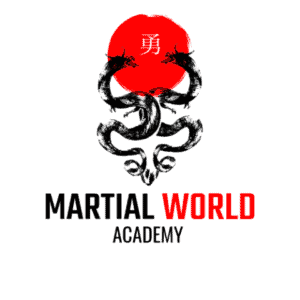This is part 7 of our “Karate Training at Home” series. Click these links for Part 1, Part 2, Part 3, Part 4, Part 5, & Part 6
The longer you are in the Karate world, the larger your Karate library will become. But if you’re just starting out, which books do you need first? Which ones are going to help you train best at home? And why should you even read books instead of just training more?
As a rule, karate books are something every serious student needs to deliberately collect and study. You can find books on any subject, no matter if your training goal is fitness, flexibility, self defense, spirituality, etc. And studying them slowly and deliberately will forge you into a superior martial artist.
Now the only question is, “which books?“. Keep reading and you’ll find out.
Why your at Home Karate Training should include Books
First, let me just address two common and valid points brought up by serious Karate-ka who just don’t enjoy reading. Namely, “Wouldn’t I be better off actually training?” and “Why shouldn’t just save time and ask my sensei?“.
Firstly, no one is suggesting that you should spend your dojo time with your nose in a book instead. No, training time is for training. But you aren’t going to be training 24 hours a day. Not even professional fighters or Olympic martial artists train 24 hours a day! No, in truth you are going to have the majority of your waking hours spent outside the realm of training, and it is in those where you should slot your reading time.
But how is a book going to help you develop as a martial artist? For example, knowing the history of Karate will save you from being taken in by scammers who might make outlandish claims about their pedigree (“I was trained by <MASTER> at the <PLACE THAT DIDN’T EXIST AT THAT TIME>“). Or being familiar with kinesiology will keep you safe when a senior student wants to try some risky “partner stretching” exercises. Or (and hopefully you never have to deal with this), having read about the realities of violence, you won’t spend huge amounts of your time training complicated pressure point techniques in hopes that it will save you from a mugger.
Now, the second question, “Why not just ask my sensei?” Well, in truth, your sensei might simply not know. No one can know everything and if your sensei claims to be the only fountain of martial knowledge you need then you need to run fast in the opposite direction!
Your sensei is going to have his own spheres of knowledge in which he is a font of wisdom. And he will , simultaneously, be absolutely useless to teach you in others. That’s just reality. Sorry… the cliche of the “all knowing master” just doesn’t exist on this side of the movie screen. And to fill in those gaps you are going to need to read books.
But which books? That is going to be up to you. I have created a list of my favorites, and few highly recommended by other Karate-ka that I respect, and I have divided them by the common goals of at home karate training.
History & Culture
Karate-Do: My Way of Life, by Gichin Funakoshi
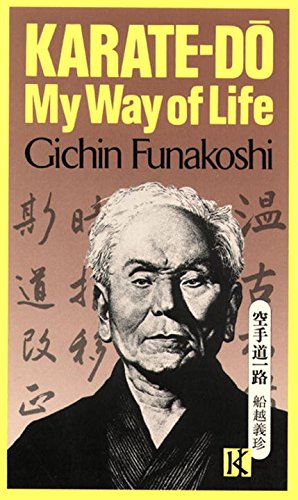
Funakoshi is often called the Father of Modern Karate. He is the man responsible for introducing Karate to Japan, and ultimately the world. In this short autobiography you’ll learn about the man, the art, and how Karate adapted after leaving Okinawa.
- Pro: It’s a light, occasionally amusing, read. A good “first” to any martial artist library.
- Con: It is a little lacking in the early history of Karate/Ti.
Bubishi: The Classic Manual of Combat, Translated by Patrick McCarthy
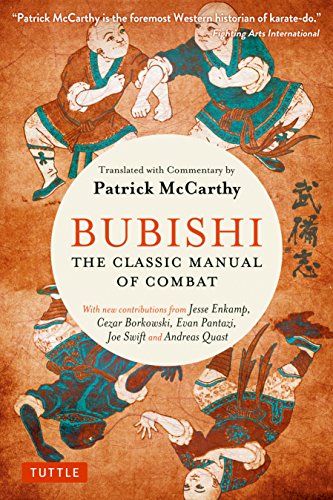
I have to be honest, this was difficult to categorize. It’s got techniques, it’s got philosophy, it’s even got Eastern medicine. But I am categorizing it under History/Culture because, taken as a whole, it is a study of exactly that: the cultural and historical study of art known as Karate. Reading this book will give you a dozen “Ah! Is that why we do that!” moments before you’re finished with it.
- Pro: Excellently researched and translated book will enlighten any Karate-ka into the history, philosophy, and techniques of Karate.
- Con: The ancient illustrations, used as technique instructions, leave much to be desired.
Techniques
Karate: the Art of Empty Hand Fighting, by Nishiyama & Brown

If you’re looking for an excellent supplement to your technique training then this book is where you should begin. Not only are the descriptions complete, but the photos contained are clear and easily understood.
- Pro: Amazing overview of the kihon (basics) of Karate.
- Con: The Self Defense chapter occasionally left me scratching my head with advice like “side kick the pistol out of your attacker’s hand”.
Solo Training: The Martial Artist’s Home Training Guide, by Loren Christensen
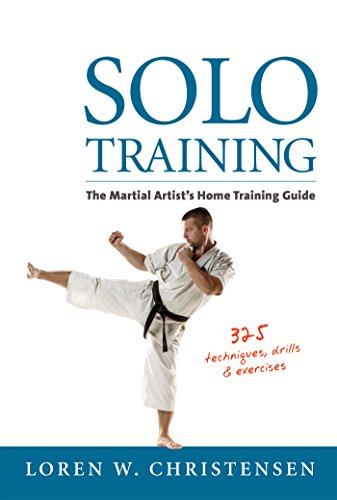
A book can never replace quality instruction, but this book sure does try. The best thing about this book is that it is divided by goals: a section on kicks, on footwork, on punches, on combinations, etc. Nearly anything you’re looking to work on, this book will help.
- Pro – Expert at-home Karate training advice from a man who has spent decades doing exactly that.
- Con – The photos are a bit too few, too dark, and occasionally too grainy.
Flexibility
Ultimate Flexibility: The Complete Guide to Stretching for Martial arts, by Sang H. Kim
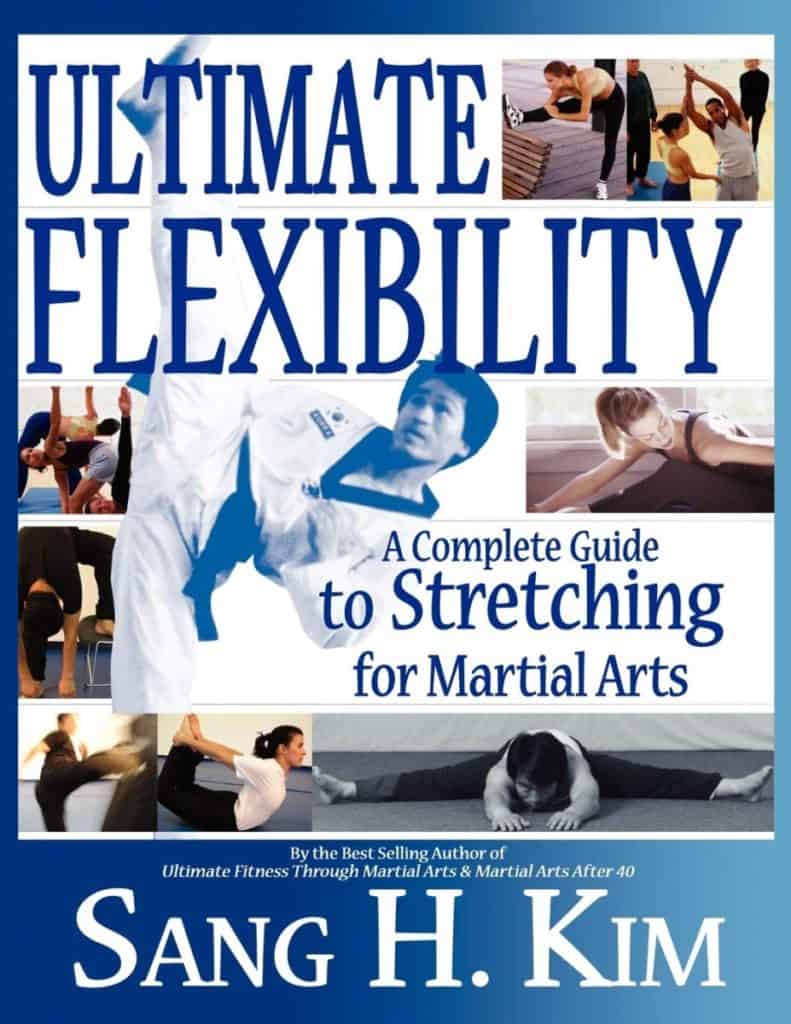
Flexibility is a challenge for many fighters, especially in our sit-at-a-desk world. This book is designed to help you overcome your “tight spots” that are holding back your progress toward better kicks, smoother kata, and a more supple body overall.
- Pro – Excellent photos and stretch explanations.
- Con – Not organized by goal (Stretches for higher kicks, Stretches for tight back, etc)
Spirituality & Philosophy
Be Like Water: Practical Wisdom from the Martial Arts, by Joseph Cardillo
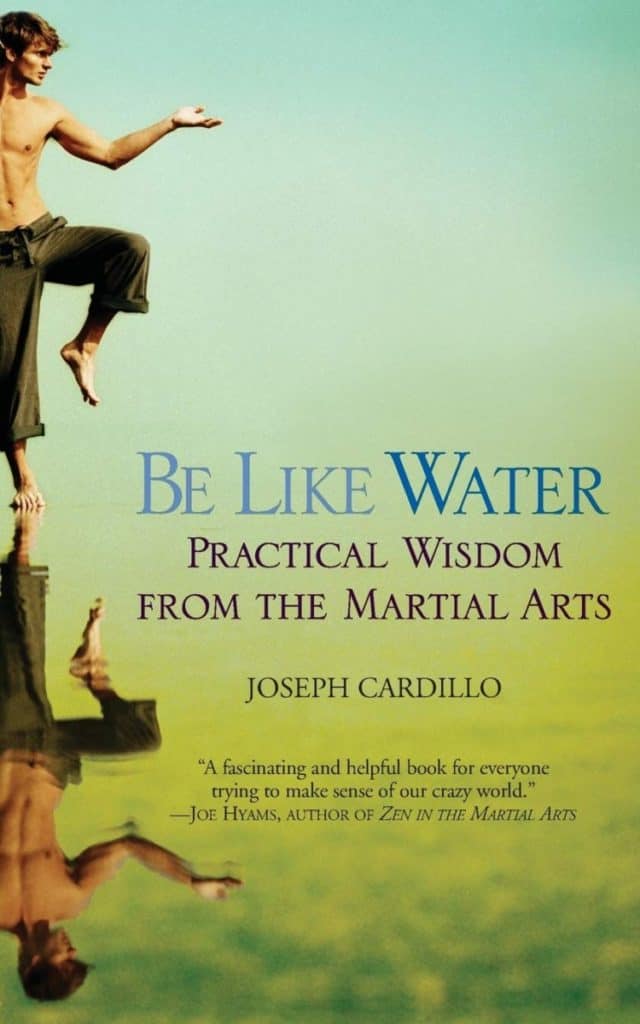
This small book was an early addition to my martial library. In it, Cardillo expounds on the philosophy (and occasionally the mysticism) that imbues life, both inside and out of the dojo. The message throughout is to receive life’s challenges as would Bruce Lee, by being like water.
- Pro – Interesting and insightful anecdotes to help apply martial philosophies to daily life.
- Con – References to “the infinite” and “energy” are a bit new-agey for me.
Warrior Wisdom: Ageless Wisdom for the Modern Warrior, by Bohdi Sanders
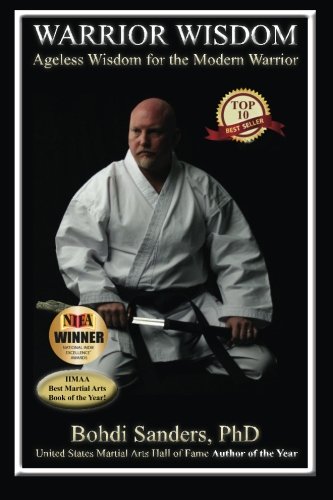
Warrior Wisdom is a more practical text than the previous entry. In it the author discusses the meaning and application to proverbs from warrior cultures across the world. From Marcus Aurelius to George Washington, Sparta to the Incas, and beyond.
- Pro – Each maxim has only 1 or 2 pages of exploration, making this the perfect kind of book to read in pieces and meditate upon through out the day.
- Con – Any exploration of ancient, or modern, maxims would be best served by the inclusion of cultural or historical context. Sadly, that is missing from this book.
Self Defense & Violence
The Gift of Fear: Survival Signals that protect us from Violence, by Gavin de Becker
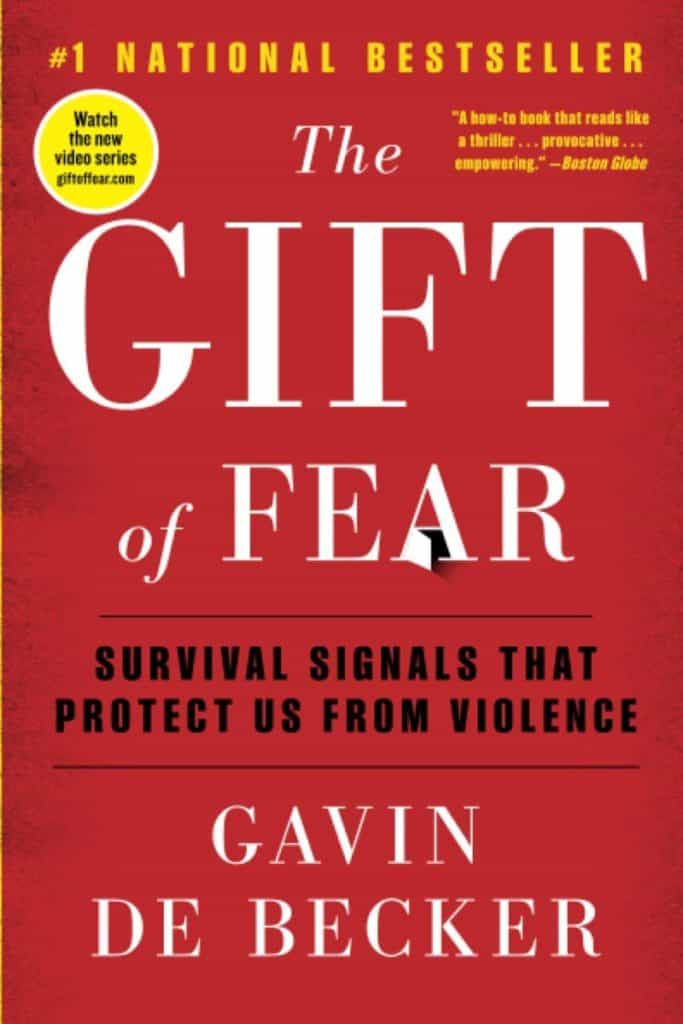
The belongs in every woman’s library. Why women? Because the real-life stories contained, while applicable to men, are more immediately useful to women. The main throughline is that when your gut is telling you something isn’t right, you must heed it and not allow your concern for “making a scene” to override your evolutionary instincts. It could cost you your life.
- Pro – Very effective in teaching you to listen to that little voice in the back of your mind when it’s warning you of danger.
- Con – Self defense advice in the back basically amounts to “take a martial arts class” in spite of the early part of the book saying that “martial arts don’t prepare you for self defense”.
The Big Bloody Book of Violence: The Smart Person’s Guide for Surviving Dangerous Times, by Lawrence Kane & Kris Wilder
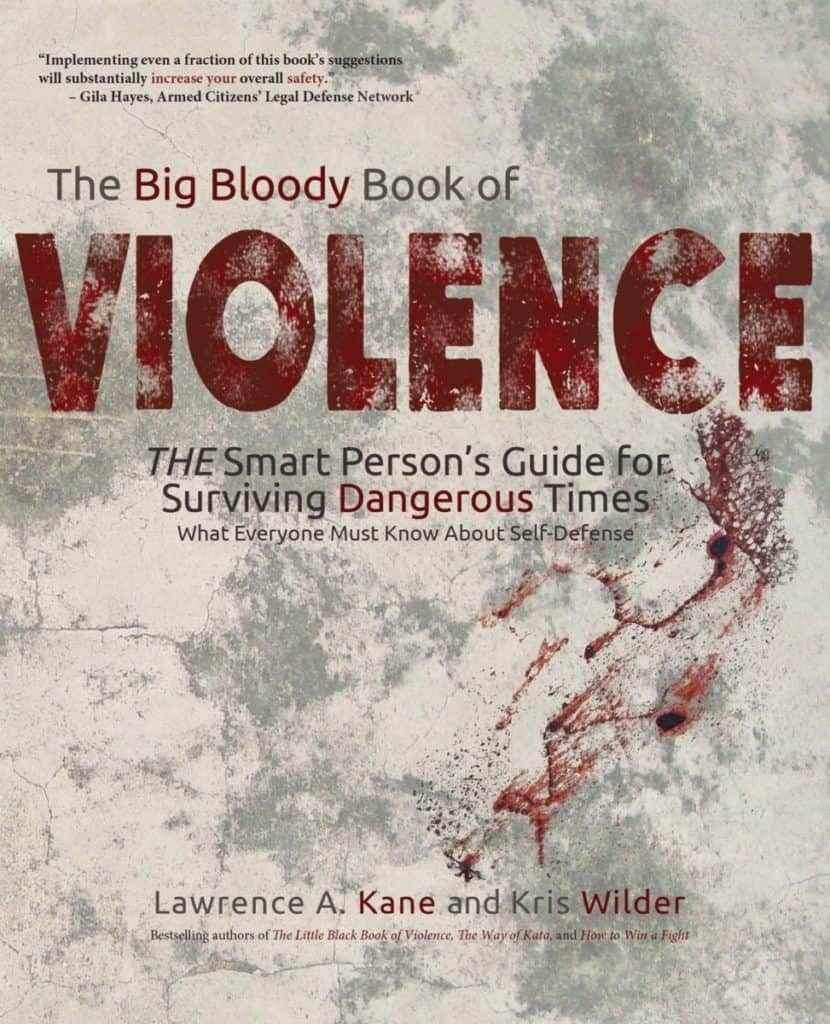
“Real violence is rarely what you think it will be”, say the authors of this book. Here they aim to teach you the facts about violence in all its mutations: domestic, social, antisocial, gang, terrorism, etc. It also instructs the reader on how to properly deal with the police, create witnesses, etc.
- Pro – Consider this your “fact book” for some of the worst things that might ever happen to you.
- Con – Occasionally, evidence provided is anecdotal where statistics would have been more compelling.
Fitness
Ultimate Fitness through Martial Arts, by Sang H. Kim

This compact book contains more than 200 exercises and drills designed to help you develop speed, power, balance, and, as a byproduct, ultimate fitness. It also contains information on proper nutrition because, as we all know, “you can’t outrun the fork”.
- Pro – Exercises are divided by skill level (beginner, intermediate, and Black Belt) making it easy to start and scale up as you get fit.
- Con – The dietary advice is pretty dated (suggesting that up to 50% of your diet should come from carbohydrates, for example) and very basic.
Inspiration
Autumn Lightening: The Education of an American Samurai, by Dave Lowry

This is a coming-of-age story line none other I’ve read. The author recounts how, as a boy growing up in St. Louis, Missouri, he came under the tutelage of a Japanese swordsman.
The real value of this books is how relatable young Lowry’s thoughts and experiences were as he underwent his training. From learning to navigate the Japanese-American cultural divide, to worrying about accidental Hara-Kiri when sheathing his sword, there were many instances where I stopped and asked myself, “What would I have done here?“. If you, or someone you love, needs some inspiration for his martial arts training then this is the book for you.
- Pro: Very interesting history of the Yagu style of swordsmanship
- Con: I wanted to know a bit about how his parents and friends felt about his “strange hobby”, but this is almost completely missing.
Living the Martial Way: A Manual for the Way a Modern Warrior Should Think, by Forrest Morgan
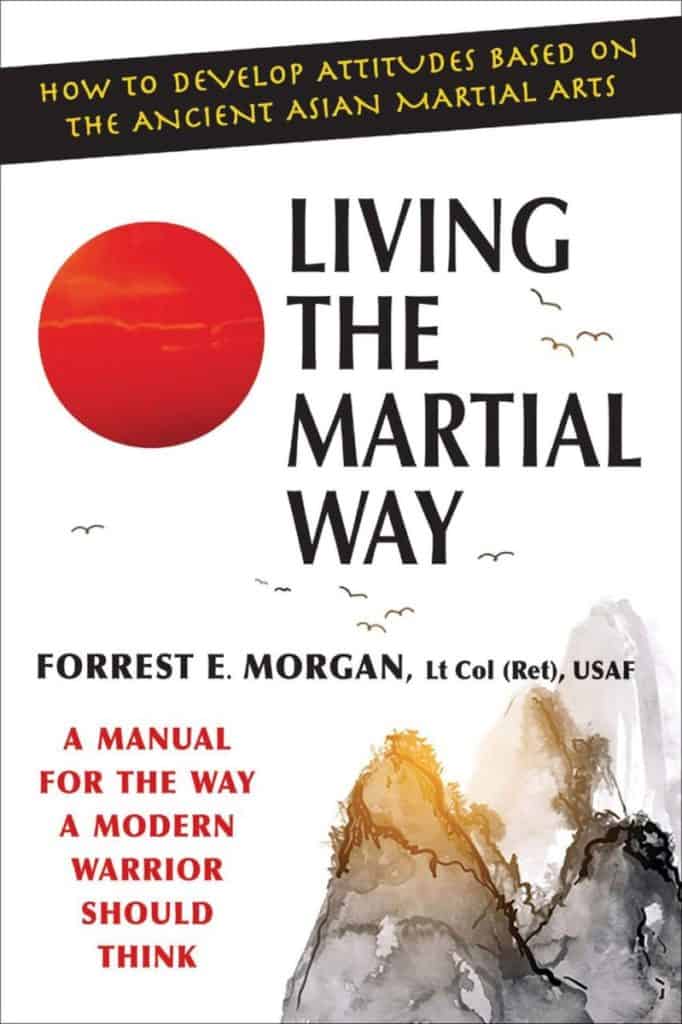
This masterful tome needs to be on the shelf of every martial artist, regardless of your style’s nation of origin. There are so many worthwhile nuggets of wisdom in these pages that it is worth double the price.
One thing I found especially inspiring was the attitude shift Morgan encourages you to take. Rather than thinking of yourself as a “dentist who does martial arts, think of yourself as a martial artist who is also a dentist”. It is a small shift, and it might seem silly in the beginning, but it had a big impact on my own training and I recommend you do the same.
- Pro: Powerful insights into the mindset required for effective training.
- Con: Occasionally the book comes off as dogmatic and ideological, whereas my own approach to martial arts is more holistic.
Final Round
Being a martial scholar is just as important as being a martial artist. The more books you have studied (not just read) the deeper your understanding of Karate, and martial arts, will become. You will be less dogmatic, more open-minded, and as a result you will grow into a better Karate-ka than you would have otherwise.
But these books should only serve as the beginnings of your library. Your pursuit of martial knowledge is as never-ending as your pursuit of martial skill and it will require its own form of dedication and training. But that’s okay – training is what we do.
Photo Attribution:
- Photo by John-Mark Smith on Unsplash
